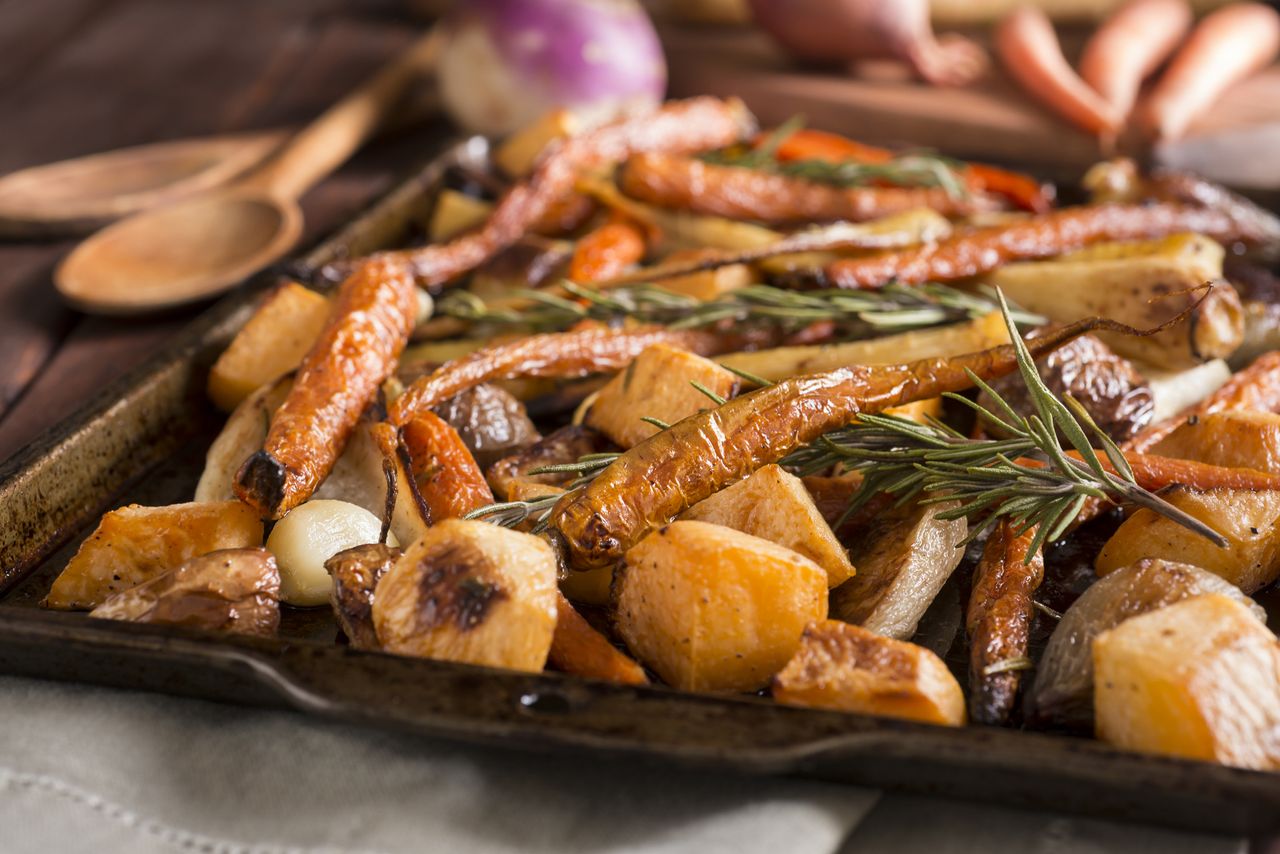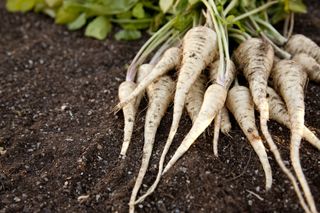The winter vegetable that's 'the prince of accompaniments to a joint of meat'
Steven Desmond on the joy of parsnips.

Every good gardener knows that one of the chief joys of growing vegetables is seasonality. Those of us who, spurning greenery flown in from thousands of miles away, wait for the crops to ripen in due season and continue to experience that once-universal phenomenon of alternating glut and dearth, all or nothing at all, that marks the vegetable-lover’s year. Now that the days are short and the temperatures low, the options from the kitchen garden are relatively few, astonishingly so compared with autumn’s bounty, but there are treasures nonetheless in prospect.
Chief among these is the parsnip, that most British of root crops. I have eaten in several parts of Europe over many years, but never encountered it on a foreign plate. Feel free to contradict me. It is true that some people in this country don’t like it, but that can’t be helped. All the more for me. In my view, it is very much improved once the frosts arrive. This has the effect of converting some of the starch in the swollen root into sugar, hence that distinctive tang. The parsnip grows to full size in the summer, as every show grower knows, but what a waste if it is cooked and served at that time, for it is then little more than bland mush. Roast it in autumn and winter and it is the prince of accompaniments to a joint of meat.
The pity of the parsnip in the kitchen garden is that it is an unattractive brute. In the summer it is a great coarse rosette of leaves, so different to the radiant finery of its near relative, the carrot. By early winter, the leaves seem to disappear altogether, as if the plant is hiding its precious root, which it after all intends to supply the energy for the flowering and seeding next year. The root is best extracted in a damp spell, drawn carefully forth until you feel that Excalibur-like pop as the long tip of the root detaches. There are people who lift the crop in one go, laying the roots in boxes of sand for use at leisure. I commend their zeal, but have never found it necessary.

Roast parsnips are a true joy.
The twin prop of the winter kitchen garden is the leek, colouring the view that distinctive steel blue, with the leaf tips folding a little over. The leek is less demanding than its friend the onion, and utterly resistant to cold and wet. The only frustration is that in a frosty spell it is impossible to remove from the ground, but we live in a variable climate, so all will be well soon enough. As does its summer equivalent, the shallot, the leek provides allium flavour in moderation, in combination with subtle texture, and, of course, it looks uncommonly good on the plate.
When it comes to winter greens, there is a clear divide between those who hail the coming of the Brussels sprout and those who, like me, pull a face. I cannot in all conscience sing its praises here. What, then, for a brassica in midwinter? Much better the Savoy cabbage, named after the alpine region of Franco-Italy, and a thing of beauty in its own right with those richly textured bright green leaves. It is best prepared and served as individual leaves, to keep those handsome virtues. As with all brassicas, keep it netted in the ground or face a losing battle with the pigeons.
A second brassica worthy of your notice in the winter is kale. I get fed up with reading that it is a wonder food and groan when I see it in a supermarket chopped randomly up into 2in squares, a treatment which does it no favours. The only way to prepare it is neatly to remove the whole midrib, the work of a moment, and then cook the leaves. It is hardiness personified and delicious, too. Of course it’s good for you as well, but it has never made my hair curl. The fashionable modern variant is Cavolo Nero (‘black kale’) grown by every Italian gardener, which has the advantage, as do all kales, of looking good in the ground as well as on the plate.
All these vegetables are solid evidence that winter is a season to be relished, not feared. Desirable in their own right, they are splendid accompaniments to Sunday lunches with gravy, redcurrant jelly or whatever tickles your fancy. This is the season of stodge, with its own litany of specialities. Time to celebrate the good things in life.
Sign up for the Country Life Newsletter
Exquisite houses, the beauty of Nature, and how to get the most from your life, straight to your inbox.
Steven Desmond’s book Gardens of the Italian Lakes is published by Frances Lincoln
-
 Robin Hood's seaside getaway, and who appears on the £20 note?
Robin Hood's seaside getaway, and who appears on the £20 note?Our daily quiz features one of the most beautiful spots in Britain... but where is it?
By Toby Keel Published
-
 A glorious 17th century home in one of the most exclusive waterside villages in Britain
A glorious 17th century home in one of the most exclusive waterside villages in BritainOrchard House was lucky not to have been sunk beneath the surface of Rutland Water when it was created in the 1970s — but it did, and today this wonderful spot is looking better than ever.
By Toby Keel Last updated